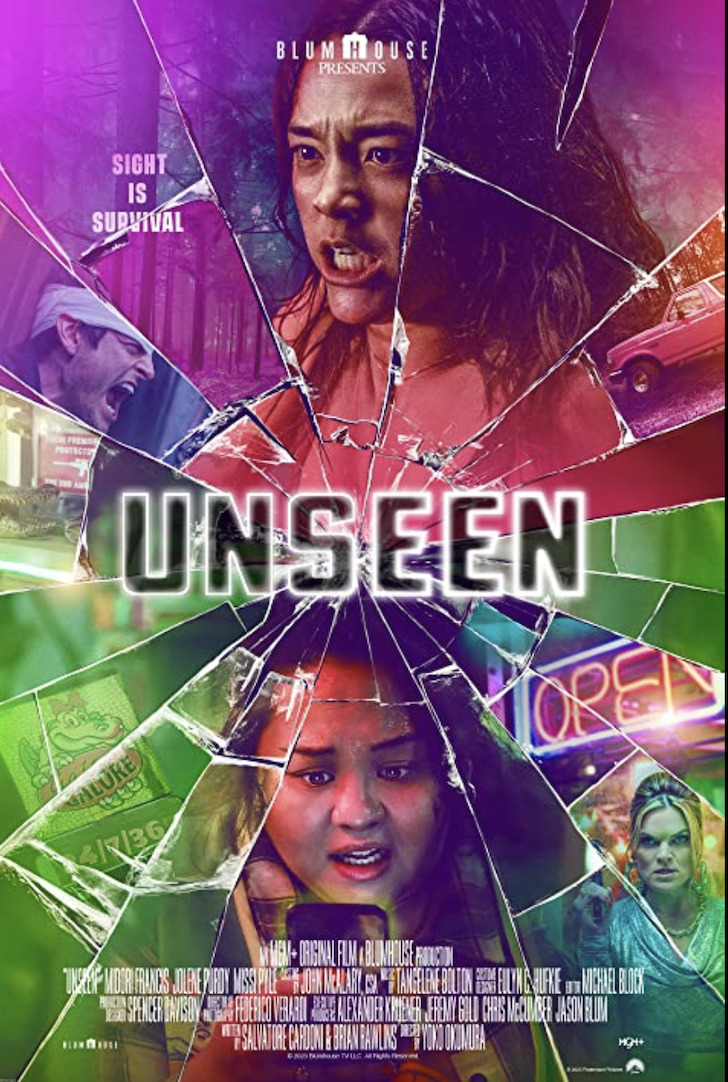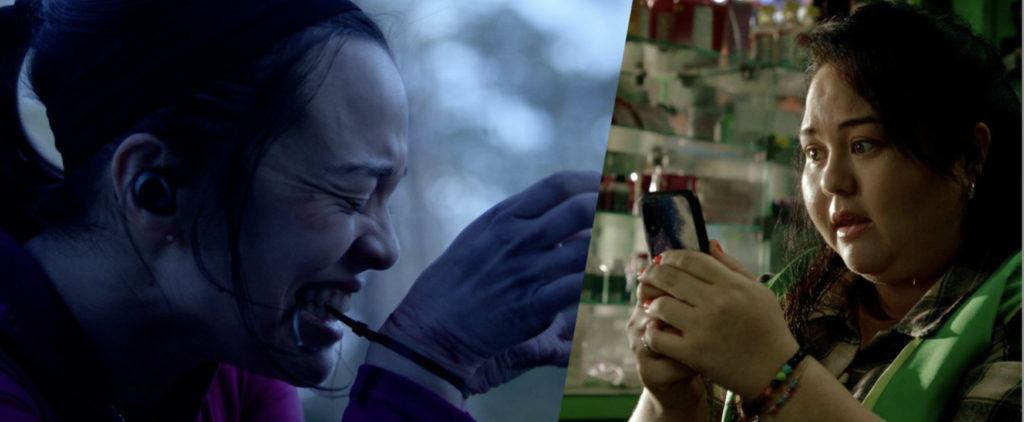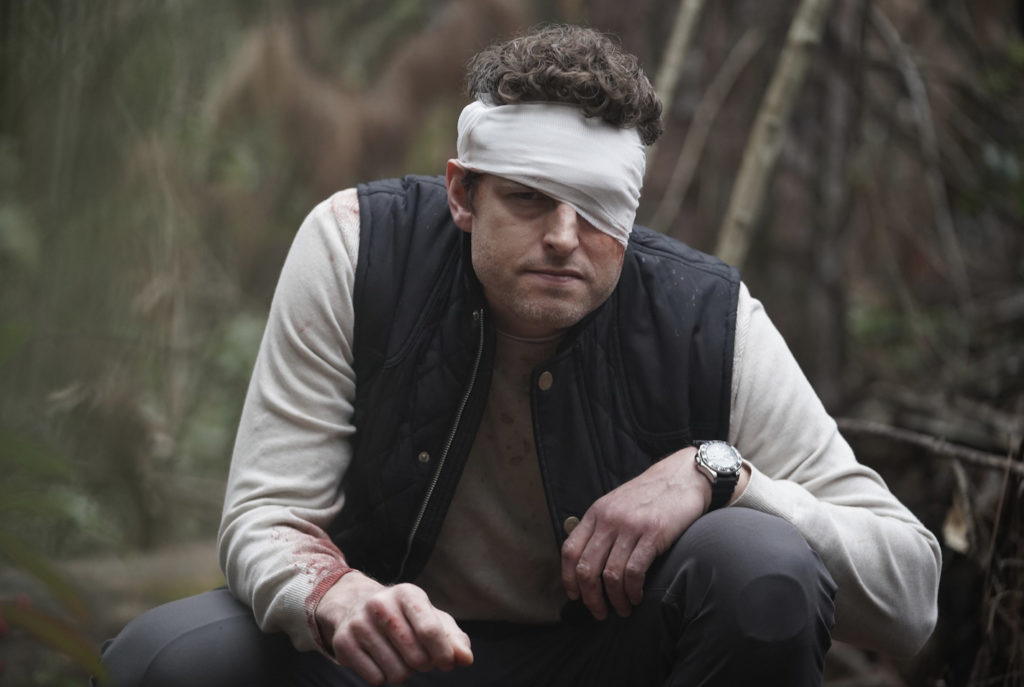
Synopsis : Two women form an unlikely connection when a depressed gas station clerk Sam (Jolene Purdy), receives a call from Emily (Midori Francis), a nearly blind woman who is running from her murderous ex in the woods. Emily must survive the ordeal with Sam being her eyes from afar using video call. Michael Patrick Lane (Dynasty) will play the ex.
Q: The story is very simple, a nearly blind woman who is trying to survive from her murderous ex in the woods by accidentally calling the woman in the store. But what was the impression of Salvatore [Cardoni] and Brian’s [Rawlins] script when you read it for the first time? What motivated you to tackle this film?
YO: Yeah, when I read it for the first time, I was like, okay, this is a fun, intense, wild ride, with over-the-top villains, and it could be a really fun movie to make. But what made me go like Oh, this is something that I could be good for, is when I realized the depth of the unlikely friendship story and how that was really the anchor of the movie. Female perspectives of friendships is a theme that’s very important to me. So I went okay, this is something that I can bring my authentic perspective to and make my own. That’s what got me excited about the script.
Q: How much did you put your own idea or input on this film?
YO: As far as the plot goes, and the essence of the story, it’s really what the writers wrote. But a lot of the style and the cinematic approach is something I infused into the movie [such as] the gas station location. It was originally written to be more of a dingy Florida gas station but a more normal one. I was like “Let’s make it pink and green” and “Let’s make it a gated theme”, you know, like a gas station that’s on the side of the road as a roadside attraction. I wanted every frame of the movie to be as fun as possible so I wanted to make the location a little garish, but like, Florida fun. So that was definitely an element that I infused.
I think the characters of the two women — once we actually cast Midori [Francis] and Jolene [Purdy], we adjusted the details of their conversation, and the nuance of their backgrounds, especially with Emily’s background, her feeling like, she never got to go to Japan and see her grandmother before. That was something that came from my own little adding of detail as a director.
Q: You grew up in Minneapolis after you moved from Japan, how much of your daily life back then is reflected in this film?
YO: Jolene’s character feels like emotionally me — both of them actually feel a little bit emotionally like me. Growing up in Minneapolis, I definitely didn’t see women like Jolene and Midori be the heroes of a story. My childhood, watching mostly Hollywood films, with white heroes, made me want to create these new kinds of heroes that you might not ever expect to see. Until now. I make movies to create the heroes that I need in the world.

Q: Could you take us through the casting process with Jolene Purdy? She was in the TV shows “Orange Is the New Black” and “White Lotus”, and other works. What was it about her character or elements that fascinated you to cast her in a leading role?
YO: Yes, when I read the script, the character was a different kind of person. Her background was a little different: she had dropped out of grad school or something and was working at this gas station. I was like no, I want somebody more relatable, as far as why they would be working at a gas station, why they’ve been stuck here. The storyline with her mom and being sick and that stuff was something that we all developed together.
But for me, honestly, I fell in love with Jolene right away when I saw her in “White Lotus”, season 1. I looked her up and was a fan girl of her. So from the very beginning when I went to the casting director [John McAlary], I was like, “For Sam’s character, I want Jolene Purdy. She is my model. If Jolene doesn’t want to do the movie, I want someone like Jolene.” So she was somebody who had name from the very beginning.
Q: The film mostly takes place in densely wooded areas. This is your first feature film that you directed. What were the challenges that you faced as a filmmaker?
YO: Yeah, definitely. I have read scripts and evaluated whether I want to do that — do I want to be in the marshes, for twelve hours a day? Overnight? Is that a lifestyle that I’m going to want for twelve weeks? But this one for sure, I was like, okay, this is an exciting challenge. I don’t know what it’s like working in a forest of New Orleans, Louisiana. But it was evident that the challenges were definitely going to be present.
New Orleans brush is very swampy, there’s a lot of prickly things, and it’s a lot of hard spaces to get through. It’s not like a clean Minnesota forest like I’m used to. It was a lot of collaboration with the crew. We had a snake wrangler — specifically, somebody who would come before anybody got to set and who would look through all the location brushes and make sure there were no snakes. There was definitely an infrastructure there to make the forest shooting as comfortable as possible. But at the end of the day, you’re still at a forest so it was cold, it was rainy, all kinds of things were happening.
But again, I got really lucky that Midori was so “down” — she was like “Get me in the dirt, get me in the water, I don’t care. I can do it.” She was hard-core in the best way, and she was such a blessing to have in this challenging production.
Q: Since you were directing your first feature-length film, and you were casting the way you wanted it, what kind of input did you receive from Blumhouse Productions? Were they very supportive?
YO: They were very supportive from the very beginning as far as the casting direction that I wanted to take it, yet they gave input. We went through all the auditions and did the callbacks, and they definitely had an approval process. They would go to the studios and they would evaluate the list that were our favorites as well. I think they really saw the film in my head; they understood what I was going for. So really the casting process with Blumhouse was very smooth. We were on the same side.

Q: Before you made this film, you pitched a story to Sam Raimi for the horror anthology “50 States of Fright” and directed the episode “Ball of Twine” [“America’s Largest Ball of Twine”]. How did that process come about and how did it lead to this film?
YO: Yeah, that was such a fun project to do. That was really my first foray into the horror genre, and it made me fall in love with it. That project was something [that came about through] a production company that I had been trying to make projects with, but those projects never came to fruition. So they knew about me and I had a relationship with them. They were like, “Hey, we’re making this Sam Raimi show. Do you have any crazy ideas that you want to pitch?” The concept that every story was based on a horror story from a different state was very exciting for me. The Ball of Twine is something that really exists in my home state of Minnesota [in Darwin], so I developed that with my writer Mae Catt, and it was that either they were going to love it or they were going to hate it. They loved it.
It was foundational for me to work with Sam and to see the potential of the horror genre, taking something that’s personal to you but then putting it into a fantastical world. Because even “Ball of Twine”, it was a mother-daughter story between Asian American characters in the Midwest. That is something that could conceptually be an indie drama or something. You take those emotional stories that could be in something more grounded and put an evil twine ball into the mix, and it becomes this entertaining spectacle but with heart. So that combination was something I walked away with as a lesson to keep infusing into my movies. That’s what I did for “Unseen” as well.
Q: Ever since the release of “Crazy Rich Asians,” there’s been some shift in the Hollywood industry. This year three actors from “Everything, Everywhere All at Once” were nominated for the Oscar. How do you see yourself through this film industry right now? What does diversity mean to you?
YO: Yeah, it’s super-exciting! I feel really blessed to be emerging as a director in features right now. It really does feel like a very exciting time when doors are opening, people are seeing the potential of our stories and us as the heroes, and us as the storytellers. And as far as where this lands in the landscape of movies that have Asian American leads and filmmakers — I have been waiting for thrillers and horror [films] that really center Asian Americans, our narratives and our concerns.
With “Unseen”, we didn’t set out to make an “Asian American” film, but by hiring the people that I felt were the best, we have this amazing, awesome Asian American thriller film that I’ve never seen before. Blumhouse, [with] a Japanese American director with two Japanese American leads, it’s a really exciting “first” to be able to do.
I’m excited and grateful that — again, it seems like the world is more receptive than ever. But I hope with diversity — we want to show diversity within diversity. Because there’s the Asian American diaspora, but then if you’re Japanese American, there are so many more different stories we can tell. Even within “Unseen” — both of the [lead] actresses are half Japanese-American — but both of them come from different socio-economic backgrounds, and have very different emotional realities. So I feel blessed to be able to show that diversity within diversity even within the microcosm of this movie.
Q: Are there any other genre films that you want to tackle? What’s coming up next for you?
YO: Yeah, I would love to make a body horror film next. That’s the sub-genre that I would love to tackle. I actually consider myself “genre-fluid” — I want to do action, I want to do musicals, I want to do all kinds of things. But right now, I’m really excited in this lane of making glamorous horror. I want to be like, John Carpenter meets Baz Lurman. I want to make those dark stories within these beautiful worlds. So I’m developing a lot of scripts and I’m attached to different things, but all within that fascination that I currently have.
Q: Thank you so much.

Check out more of Nobuhiro’s articles.
Here’s the trailer of the film.

